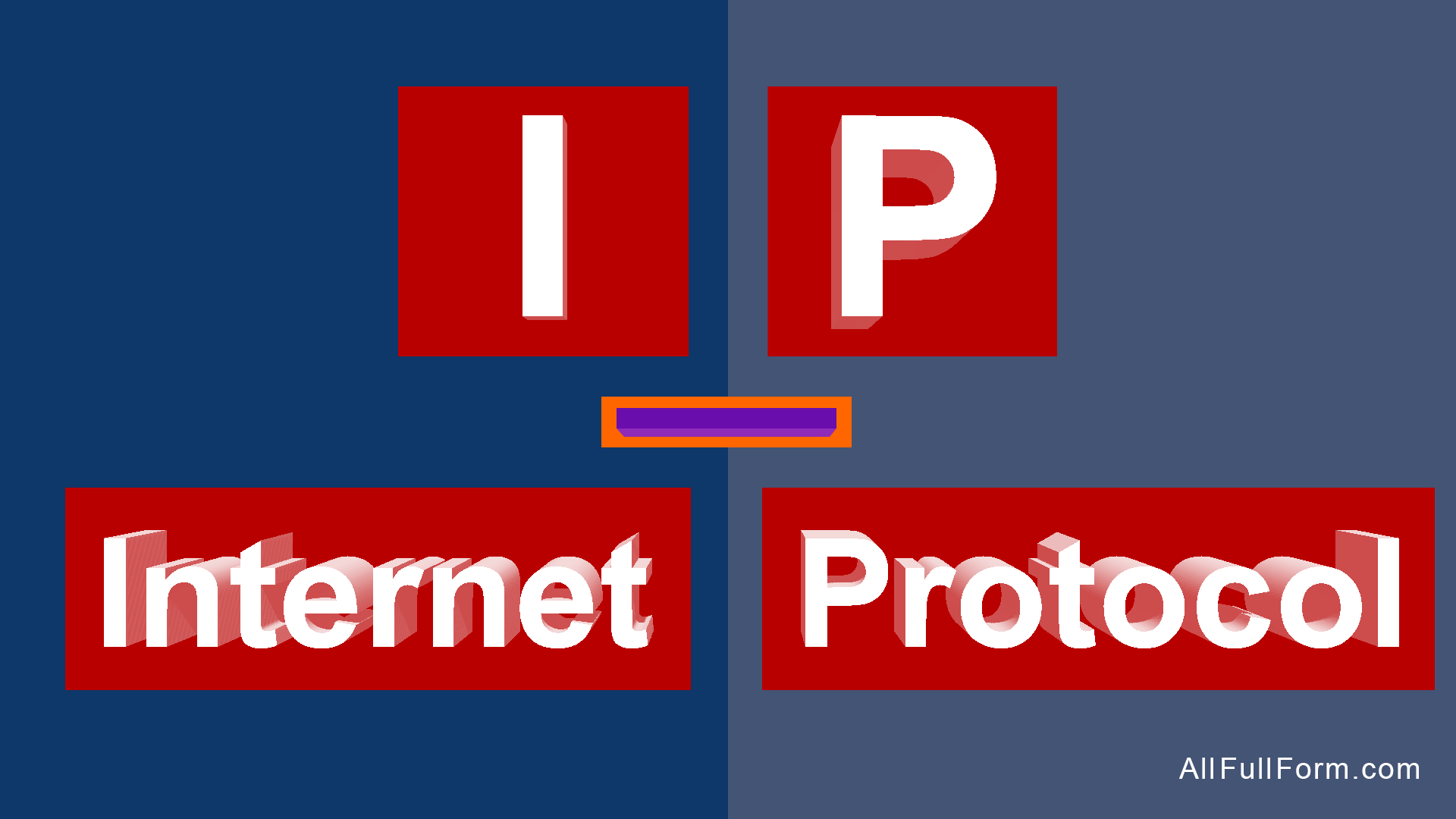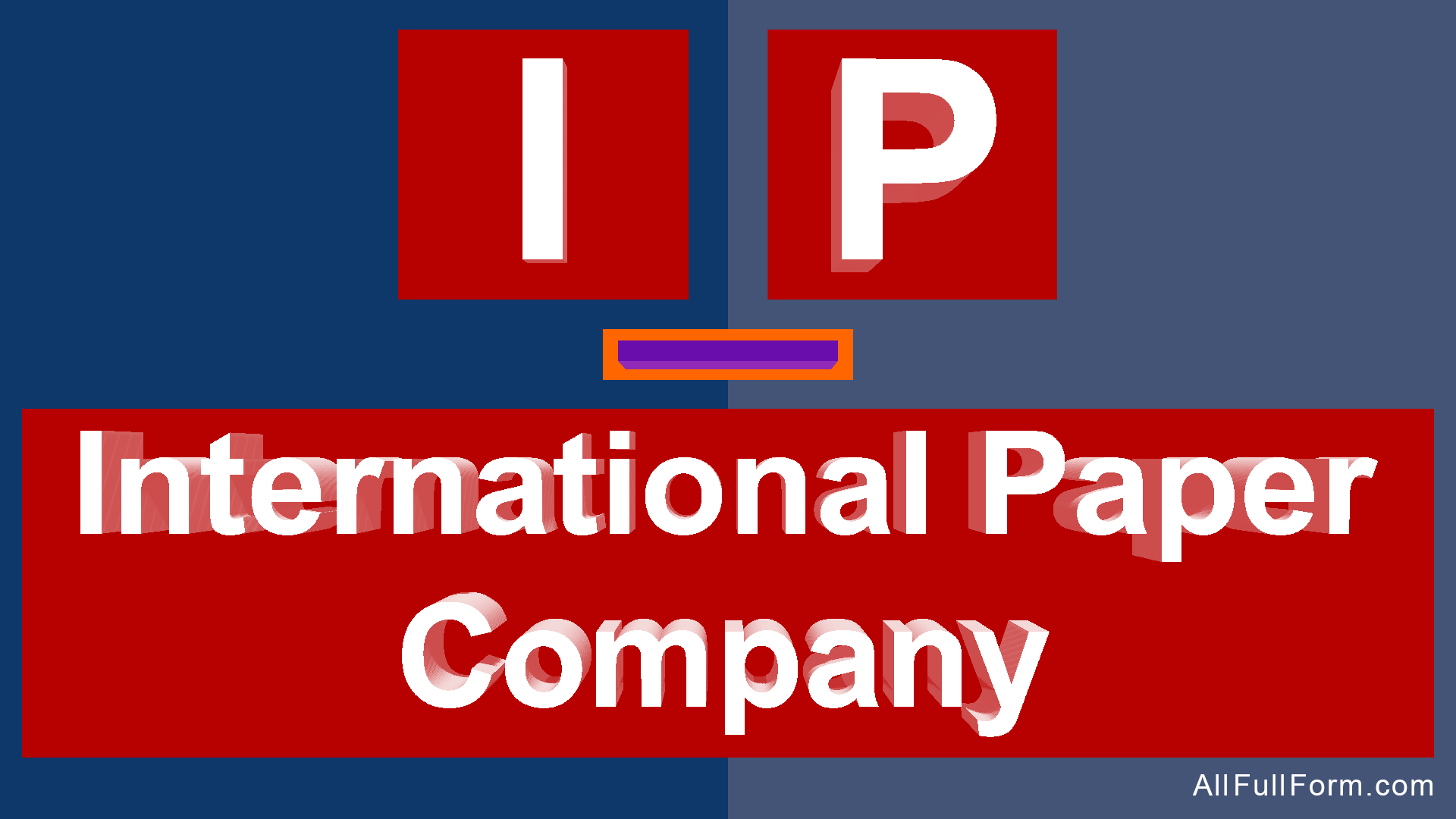Table of Contents
IP: Internet Protocol
The Internet Protocol (IP) is a protocol, or set of rules, for routing and addressing packets of data so that they can travel across networks and arrive at the correct destination. Data traversing the Internet is divided into little chunks called packets. IP information is attached to each packet, and this information helps routers to send packets to the right place. Every device or domain that connects to the Internet is assigned at least one IP address, and as packets are directed to the IP address attached to them, data arrives where it is needed.

The first major version of IP is Internet Protocol Version 4 (IPv4) it is the dominant protocol of the Internet. Its successor is Internet Protocol Version 6 (IPv6), which has been in increasing deployment on the public Internet since 2006. The most widely used version of IP today is Internet Protocol Version 4. However, IPv6 is also beginning to be supported. IPv6 provides for much longer addresses and therefore for the possibility of many more Internet users. IPv6 includes the capabilities of IPv4 and any server that can support IPv6 packets can also support IPv4 packets.
Types of Internet Protocol
When most people talk about “the Internet” what they are really referring to is the World Wide Web (WWW). The Internet is actually composed of many different components.
- TCP(Transmission Control Protocol/ Internet Protocol):- It is a transport layer protocol that provides a reliable stream delivery and virtual connection service to applications through the use of sequenced acknowledgement.
- SMTP(Simple Mail Transfer Protocol):- This protocol is dedicated to sending e-mail messages originated on a local host over a TCP connection to a remote server.
- PPP(Point to Point Protocol):- It is a communication protocol that is used to create a direct connection between two communicating devices.
- FTP(File Transfer Protocol):- It enables file sharing between hosts, both local and remote, and runs on top of TCP. For file transfer, FTP creates two TCP connections: control and data connection.
- SFTP(Secure File Transfer Protocol):- It is a secure file transfer protocol. It runs over the SSH protocol. It supports the full security and authentication functionality of SSH.
- HTTP(HyperText Transfer Protocol):- It is the protocol used by web server to allow web pages to be shown in a web browser. If you look up into the address bar of your web browser, it has the prefix “http://” in front of the address.
- HTTPS(HyperText Transfer Protocol Secure):- It is an extension of the HTTP. It is used for secure communication over a computer network with the SSL/TLS protocol for encryption and authentication.
- TELNET(Terminal Network):- You can connect to and use a remote computer program by using the telnet protocol.
- Gopher:- It is a menu-based program that enables you to browse for information without knowing where the material is located.
- POP3(Post Office Protocol 3):- This protocol helps us to retrieve and manage emails from the mailbox on the receiver mail server to the receiver’s computer.
IP: Intellectual property
IP stands for Intellectual property. IP is a category of property that includes intangible creations of the human intellect. There are many types of intellectual property, and some countries recognize more than others. The most well-known types are copyrights, patents, trademarks, and trade secrets. Intellectual property is divided into two categories: Industrial Property includes patents for inventions, trademarks, industrial designs and geographical indications. Copyright covers literary works (such as novels, poems and plays), films, music, artistic works (e.g., drawings, paintings, photographs and sculptures) and architectural design. Rights related to copyright include those of performing artists in their performances, producers of phonograms in their recordings, and broadcasters in their radio and television programs.

The main purpose of intellectual property (IP) law is to encourage the creation of a wide variety of intellectual goods. Early precursors to some types of intellectual property existed in societies such as Ancient Rome, but the modern concept of intellectual property developed in England in the 17th and 18th centuries. The term “intellectual property” began to be used in the 19th century, though it was not until the late 20th century that intellectual property became commonplace in the majority of the world’s legal systems.
IP: Indian Pharmacopoeia

In Pharmaceuticals Industry, IP stands for “Indian Pharmacopoeia“. It is an official document meant for overall quality control and assurance of pharmaceutical products marketed in India by way of contributing on their safety, efficiency and affordability. It is like the bible of medical science in India, it contains a collection of authoritative procedures of analysis and specifications for Drugs. Drugs manufactured in India have to be labelled with the mandatory non-proprietary drug name with the suffix “I.P.”. Eighth Edition of Indian Pharmacopoeia (IP-2018) is the current Indian Pharmacopoeia (I.P.), it was released by Secretary, Ministry of Health & Family Welfare, Government of India.
IP: Inpatient
In Medical field IP stands for Inpatient. Inpatient care refers a person who goes into hospital to receive medical care, and whose condition requires admission to a hospital. The main two ways that you could become an inpatient is through a hospital’s ER (emergency room), or through a pre-booked surgery or treatment (like if you need a knee replacement).
You don’t have to stay overnight in hospital to be classified as an inpatient, so as long as you’ve been admitted by a doctor and received treatment, such as surgery or an endoscopy, even if you’re only in for the day – you’ll still be an inpatient. It’s important to remember that even if you’re visiting your doctor or specialist at a hospital, it doesn’t necessarily mean you’re classified as an inpatient. Some medical professionals may have a room they work from within a hospital.

Patients enter inpatient care mainly from previous ambulatory care such as referral from a family doctor, or through emergency medicine departments. The patient formally becomes an “inpatient” at the writing of an admission note. Likewise, it is formally ended by writing a discharge note.
IP: International Paper Company

The International Paper Company (NYSE: IP) is an American pulp and paper company, the largest such company in the world. It has approximately 56,000 employees, and is headquartered in Memphis, Tennessee. The company was incorporated January 31, 1898, upon the merger of 17 pulp and paper mills in the northeastern United States. The company’s logo was designed by American graphic designers Lester Beall and Richard Rogers in 1960. The logo features the letters “I” and “P” which form a stylized arrow.
Other Full Forms of IP
| IP Full Form | Category |
|---|---|
| Ipswich | Postal Codes |
| Iraqi Police | Police |
| Iambic Pentameter | Music |
| Incontinentia Pigmenti | Diseases & Conditions |
| Identity Preserved | Law & Legal |
| Image Processing | Military |
| Implementation Procedure | Military |
| In Patient | Hospitals |
| In Process | General Business |
| In Progress | US Government |
| Increased Productivity | US Government |
| Incredible Price | General Business |
| Independent Patent | General Business |
| Independent Practice | Hospitals |
| Induced Potential | Physics |
| Information Processor | Military |
| Ingress Protection | Cyber & Security |
| Initial Point | Military |
| Initial Production | Military |
| Injured Party | Police |
| Innings Pitched | Sports |
| Inspired People | Religion |
| Institutional Program | US Government |
| Instructor Pilot | Military |
| Instrument Panel | NASA |
| Intellectual Property | Electronics |
| Intelligence Processing | Military |
| Intelligent Peripheral | Telecom |
| Intended Parent | Community |
| Intense Pain | Hospitals |
| Interaction Point | Physics |
| Interesting Point | Universities |
| Intermediate Period | Geology |
| Internal Protocol | Military |
| International Paper Company | NYSE Symbols |
| International Pharmaceuticals | Companies & Firms |
| International President | Toastmasters |
| Internet Packet | Networking |
| Internet Protocol | Military |
| Internet Provider | Companies & Firms |
| InterPhalangeal | Physiology |
| Intra- Peritoneal | Physiology |
| Invisible Particles | Meteorology |

It’s really very difficult in this full of activity life to listen to news on Television, thus I simply
use WWW (world wide web) for that reason, and get the most up-to-date information.